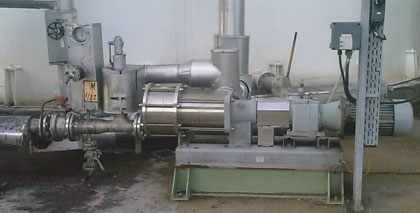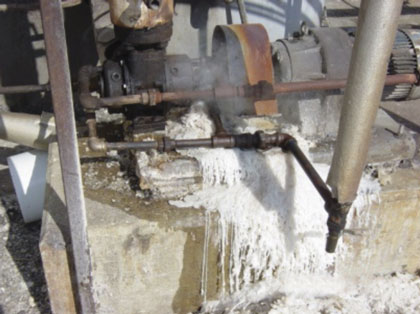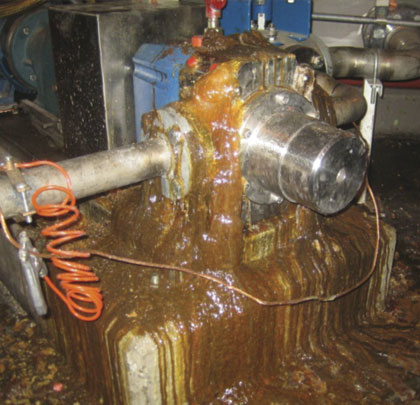To the average person, many of the raw materials that are commonly used in the manufacture of chemicals can resemble either a steaming bowl of alphabet soup—KOH, NaOH, HCl, and HF, for example—or a bad Scrabble rack—toluene and xylene, monomers and polymers, for instance. However, those who make a living manufacturing such chemical-based compounds as caustics, acids, solvents, and polymers know that valuable chemicals are pivotal to the production process, but can also be extremely dangerous and harmful to site personnel and the environment, if not handled properly.
This is a constant concern for manufacturers as hazardous chemical compounds are used in a large number of industries and products, such as:
- Adhesives
- Biofuels
- Petroleum Additives
- Polyurethane Foam
- Molten Sulfur
- Pulp and Paper
- Food Processing
- Resins
- Soap and Detergents
- Paint and Coatings
- Lube Oils and Greases
- Petrochemicals
- Herbicides and Pesticides
- Silicates
In addition to being widely used and potentially dangerous or hazardous if mishandled, many chemical compounds are also extremely expensive. If a leak were to occur during the handling or transfer of these products, large costs would be incurred by the operator due not only to the loss of raw materials but also for cleanup and potential environmental remediation. All of these factors combine to make the full containment of dangerous chemicals a front-of-mind concern for facility operators.
Crucial pieces of equipment that are utilized during the manufacture and handling of dangerous chemicals are the pumps that either introduce raw materials into the production process or transfer end products for packaging, storage, or shipping to end users.
Mechanically sealed pumps are commonly used for these transfer activities, but this white paper will illustrate how seal-less pump technologies can often be the more effective choice when full containment of dangerous and valuable chemicals is an absolute must.

Chemicals can not only be hazardous if mishandled, but hard-to-seal and expensive, and if a leak does occur, the safety of site personnel, surrounding communities, and the environment can be put at risk with the potential for injury or loss of life and the incurrence of exorbitant cleanup or remediation costs. That’s why chemical processors who require full product containment would be wise to consider the benefits of seal-less pumps when compared to traditional pumps that feature packing glands or mechanical seals.
THE CHALLENGE
When handling dangerous chemicals, there are four main areas of concern for manufacturers:
- Safety: Ensuring that site personnel, surrounding communities, and the environment are not harmed.
- Product Containment: When dangerous or hazardous products are fully contained and not allowed to leak, valuable raw materials and products are not lost to the environment, improving safety overall.
- Maintenance: Mechanical shaft-seal failures are the number one cause of pump downtime. Excessive maintenance costs generally are accumulated in two forms—the need to constantly repair, rebuild, or replace underperforming pumps or components, and in the downtime that brings production runs to a grinding halt.
- Operating Costs: An overlooked drag on the bottom line can be in the form of seal-flush water with the impact of the seal water on the process and the cost of the flush water needing to be taken into account.
- The most common pump technologies that are used in the manufacture and handling of dangerous chemicals include diaphragm, sliding vane, lobe, progressive cavity, centrifugal, and gear. All of the traditional pump technologies have one thing in common: They rely on various types of seals to prevent shaft leakage. The two most common types of seals, packing and mechanical, are used in many hazardous-chemical applications, but they both have their own potential shortcomings:
- Packing Rings: This method utilizes braided packing material that includes a set of formed rings that are wrapped around the pump shaft and held in place by an adjustable gland that has been designed to control shaft leakage. A small amount of leakage is needed for lubrication and cooling. Packing has been widely used in a variety of industries (such as in resin and paint and coatings), but should not be generally considered a best practice for hazardous chemicals.
- Mechanical Seals: These seals come in two general variations: single and double. Single mechanical seals can usually adequately address the problem of fluid leakage, but when used with liquids of higher viscosity, the product drag can distort the seal or cause it to break away from the shaft completely. Single mechanical seals also are incapable of containing potentially hazardous vapors. Double mechanical seals can prevent the escape of vapors and are more reliable when handling viscous liquids, but they can be prohibitively expensive to acquire, repair, clean, and maintain.

The most obvious shortcomings of mechanically sealed pumps in chemical processing are the catastrophic failures that can occur when the seals fail. In these instances, valuable raw materials and end products are irretrievably lost, while the safety of plant personnel and the environment is put at risk. Damage is also done to the operation in the form expensive costs for cleanup, downtime, parts replacement, or the purchase of a brand-new pump.
A LOOK AHEAD
While any of the various types of seals can perform admirably for long periods of time, they will eventually need maintenance or need to be replaced before major shaft leakage can occur. Replacing the seals, not only after they fail, but also as a form of preventative maintenance is costly.
The cost of a leak to a manufacturer includes the loss of valuable raw materials or finished products, downtime in production, and the costs and potential penalties associated with the chemical cleanup. Leaks of hazardous materials that reach the outside environment can be subject to fines and remediation costs from the U.S. Environmental Protection Agency (EPA), as well as other local and state regulatory agencies. Additionally, other countries have their own sets of regulations, which can often be more stringent than those in the U.S. Spilled hazardous materials also pose safety risks for site personnel and cleanup crews, which raises liability issues.
In next month’s conclusion, we’ll examine the solution to these challenges.
ABOUT THE AUTHORS
Chrishelle Rogers is the global gear pump product manager for EnviroGear® and PSG®. Ms. Rogers can be reached at 909.222.1309 or chrishelle.rogers@psgdover.com.
Nicholas Ortega is the engineering manager for EnviroGear® and PSG and can be reached at 909.512.1230 or nicholas.ortega@psgdover.com. PSG is comprised of several leading pump brands, including Abaque®, Almatec®, Blackmer®, Ebsray®, Griswold™, Maag Industrial Pumps, Mouvex®, Neptune™, Quattroflow™, RedScrew™, and Wilden®. For more information on EnviroGear and PSG, visit www.psgdover.com.
____________________________________________
MODERN PUMPING TODAY, January 2016
Did you enjoy this article?
Subscribe to the FREE Digital Edition of Modern Pumping Today Magazine!



